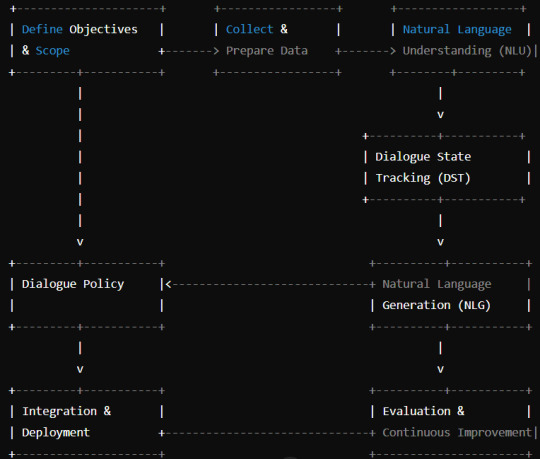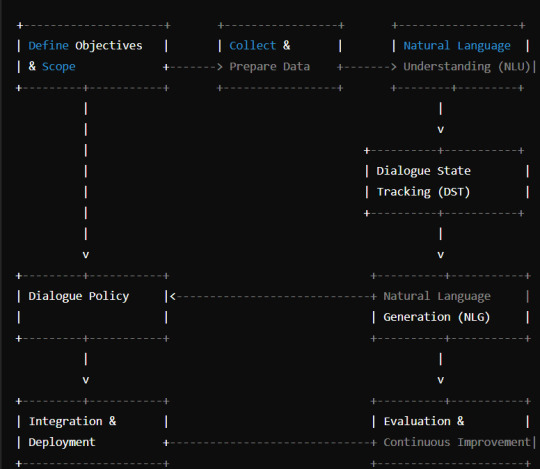Don't wanna be here? Send us removal request.
Text
Academic Papers on NLP
From one of my reddit comments...
So the best introduction to NLP is this video by Irving Kirsch. Here are the slides.
But if you want to really research NLP, you should get into the original papers. This is great fun and relatively easy these days. If you have Zotero and the Scihub plugin for Zotero, you can plug in any DOI link and it'll come up. You may have additional papers that you want to pull from citations; I use Semantic Scholar to turn citations into DOI links that I can get Zotero to pull.
So here's my research on NLP (if you copy and paste the URLs into https://sci-hub.hkvisa.net/ they'll give you the PDFs):
Predicate Matching in NLP
The Eyes Don’t Have It: Lie Detection and Neuro-Linguistic Programming
Research findings on neurolinguistic programming: Nonsupportive data or an untestable theory?
Mental imagery as revealed by eye movements and spoken predicates: A test of neurolinguistic programming
Neuro-linguistic programming treatment for anxiety: Magic or myth?
Double hypnotic induction: An initial empirical test
Neurolinguistic programming: a systematic review of the effects on health outcomes
There's also the papers that Michael Heap did:
Neurolinguistic Programming - An Interim Verdict
Neurolinguistic Programming: What is the Evidence?
Neurolinguistic Programming: A British Perspective
The Validity of Some Early Claims of Neurolinguistic Programming
Also recommended is @ellaenchanting's overview and Wordweaver's discussion on what NLP repackaged.
37 notes
·
View notes
Text
Today, I want to dive into the fascinating world of Natural Language Processing, or NLP. 🌐✨
What is NLP?
Natural Language Processing is a field of artificial intelligence (AI) that focuses on the interaction between computers and humans through natural language. The ultimate goal of NLP is to enable computers to understand, interpret, and respond to human language in a way that is both meaningful and useful.
Why is NLP Important?
NLP is crucial because it helps bridge the gap between human communication and computer understanding. With the vast amount of unstructured data generated daily (like emails, social media posts, and documents), NLP allows for the extraction of meaningful information and insights.
Key Components of NLP:
Tokenization: Breaking down text into smaller units like words or phrases.
Part-of-Speech Tagging: Identifying the grammatical components of each token (e.g., nouns, verbs).
Named Entity Recognition (NER): Detecting and classifying entities like names, dates, and locations.
Sentiment Analysis: Determining the sentiment or emotion expressed in a piece of text.
Machine Translation: Automatically translating text from one language to another.
Speech Recognition: Converting spoken language into text.
Applications of NLP:
Chatbots and Virtual Assistants: Siri, Alexa, and Google Assistant use NLP to understand and respond to user queries.
Text Analytics: Analyzing customer feedback, reviews, and social media posts to gauge public sentiment.
Language Translation: Services like Google Translate help break down language barriers.
Content Generation: Tools that help in drafting emails, articles, and even code.
Challenges in NLP:
Ambiguity: Words and sentences can have multiple meanings.
Context Understanding: Grasping the context in which something is said or written.
Sarcasm and Irony: Detecting nuanced language use can be tough.
Future of NLP:
As technology advances, NLP will become even more sophisticated, improving our interactions with machines and making information retrieval and communication more seamless.
I hope this gives you a clearer picture of what NLP is and why it's such an exciting field! Feel free to ask any questions or share your thoughts below. 🌟
#NLP #ArtificialIntelligence #MachineLearning #TechExplained #DataScience #FutureTech
0 notes
Text
a dialogue management system (DMS) for detecting diseases using symptoms
1. Define Objectives and Scope
Identify Use Cases: Focus on disease detection based on user-reported symptoms.
Medical Domain Requirements: Ensure compliance with medical standards and regulations (e.g., HIPAA).
Target Diseases: Specify the range of diseases the system will handle.
2. Data Collection and Preparation
Medical Data Sources: Collect data from medical records, symptom checkers, and health-related datasets.
Data Annotation: Annotate data with medical entities such as symptoms, diseases, and relevant medical history.
3. Natural Language Understanding (NLU)
Intent Recognition: Train models to recognize intents related to symptom reporting, seeking diagnosis, and requesting advice.
Entity Extraction: Extract medical entities like symptoms, durations, severities, and medical history.
Preprocessing: Implement preprocessing steps tailored to medical terminology.
4. Dialogue State Tracking (DST)
State Representation: Define a state representation that includes reported symptoms, patient history, and current context.
State Update Mechanism: Update the state based on new inputs, maintaining a coherent history of the dialogue.
5. Dialogue Policy
Policy Learning: Develop a policy to guide the conversation towards gathering relevant medical information and providing potential diagnoses.
Medical Knowledge Integration: Incorporate medical guidelines and knowledge bases to inform the policy.
Action Selection: Implement actions to ask follow-up questions, provide preliminary diagnoses, and suggest next steps.
6. Natural Language Generation (NLG)
Template-Based NLG: Create templates for generating medically appropriate and empathetic responses.
Dynamic NLG: Use advanced models to generate responses tailored to the specific medical context.
7. Integration and Deployment
Backend Integration: Integrate with medical databases, electronic health records (EHR), and external APIs for additional information.
User Interface: Develop interfaces like web-based chatbots, mobile apps, or voice assistants for user interaction.
Scalability and Performance: Ensure the system can handle high volumes of queries and provide quick responses.
8. Evaluation and Testing
User Testing: Conduct thorough testing with healthcare professionals and patients to gather feedback and validate accuracy.
Automated Testing: Implement tests to ensure the system’s reliability and safety.
Evaluation Metrics: Track metrics such as diagnostic accuracy, user satisfaction, and system response time.
9. Continuous Improvement
Monitoring and Logging: Continuously monitor the system’s performance and log interactions for analysis.
Iterative Refinement: Regularly update the system based on feedback and new medical knowledge.
A/B Testing: Conduct A/B testing to evaluate the impact of changes and improve the system iteratively.
Example Tools and Frameworks
NLU: spaCy, NLTK, Rasa NLU, BioBERT
DST: Rasa, Tracker (from Microsoft Bot Framework)
Dialogue Policy: Rasa, Reinforcement Learning libraries, medical guidelines integration
NLG: Templating libraries, GPT-3, Transformer-based models
Integration: Flask, Django, Node.js, FHIR (Fast Healthcare Interoperability Resources)
User Interface: Botpress, Microsoft Bot Framework, Google Dialogflow
Pipeline Diagram

This specialized pipeline for a DMS in disease detection ensures a robust and medically sound approach to developing a tool that can assist in preliminary diagnosis based on symptoms.
0 notes
Text
Creating a dialogue management system (DMS) involves several key components and stages. Here is a high-level pipeline outlining the essential steps and components for developing a DMS:
1. Define Objectives and Scope
Identify Use Cases: Determine the specific use cases your DMS will handle, such as customer support, booking systems, or personal assistants.
User Requirements: Gather requirements from potential users to understand their needs and preferences.
2. Data Collection and Preparation
Data Sources: Collect dialogue data relevant to your use cases. This can include transcripts from customer service interactions, chat logs, and conversational datasets.
Data Annotation: Annotate the collected data with intents, entities, and dialogue acts if necessary.
3. Natural Language Understanding (NLU)
Intent Recognition: Develop or train models to classify user inputs into predefined intents.
Entity Extraction: Develop or train models to identify and extract relevant entities from user inputs.
Preprocessing: Implement text preprocessing steps such as tokenization, stemming, lemmatization, and stop-word removal.
4. Dialogue State Tracking (DST)
State Representation: Define a state representation that captures the necessary context and information from the dialogue.
State Update Mechanism: Develop a mechanism to update the dialogue state based on new user inputs and system actions.
5. Dialogue Policy
Policy Learning: Develop a policy that decides the next action based on the current dialogue state. This can be rule-based or learned using reinforcement learning.
Action Selection: Implement the action selection process to choose the most appropriate system response.
6. Natural Language Generation (NLG)
Template-Based NLG: Develop templates for generating system responses based on the selected action and dialogue state.
Dynamic NLG: Use machine learning models to generate more dynamic and contextually appropriate responses.
7. Integration and Deployment
Backend Integration: Integrate the DMS with backend systems, databases, and APIs required for fulfilling user requests.
User Interface: Develop user interfaces, such as chatbots or voice assistants, that allow users to interact with the DMS.
Scalability and Performance: Ensure the system is scalable and performs well under different loads.
8. Evaluation and Testing
User Testing: Conduct user testing to gather feedback and identify areas for improvement.
Automated Testing: Implement automated tests to check the system’s performance, accuracy, and robustness.
Evaluation Metrics: Define and track key performance indicators (KPIs) such as task success rate, user satisfaction, and response time.
9. Continuous Improvement
Monitoring and Logging: Continuously monitor the system’s performance and log interactions for further analysis.
Iterative Refinement: Regularly update and refine the system based on user feedback and performance data.
A/B Testing: Conduct A/B testing to evaluate the impact of changes and new features.
Example Tools and Frameworks
NLU: spaCy, NLTK, Rasa NLU, BERT, GPT-3
DST: Rasa, Tracker (from Microsoft Bot Framework)
Dialogue Policy: Rasa, Reinforcement Learning libraries
NLG: Templating libraries, GPT-3, Transformer-based models
Integration: Flask, Django, Node.js
User Interface: Botpress, Microsoft Bot Framework, Google Dialogflow
Pipeline Diagram

This pipeline provides a structured approach to developing a dialogue management system, ensuring all critical components are addressed effectively.
0 notes
Text
Natural Language Understanding (NLU)
Intent Recognition: Develop or train models to classify user inputs into predefined intents. Entity Extraction: Develop or train models to identify and extract relevant entities from user inputs. Preprocessing: Implement text preprocessing steps such as tokenization, stemming, lemmatization, and stop-word removal.
0 notes
Text
Data Collection and Preparation
Data Sources: Collect dialogue data relevant to your use cases. This can include transcripts from customer service interactions, chat logs, and conversational datasets.
Data Annotation: Annotate the collected data with intents, entities, and dialogue acts if necessary.
0 notes
Text
Define Objectives and Scope
Identify Use Cases: Determine the specific use cases your DMS will handle, such as customer support, booking systems, or personal assistants. User Requirements: Gather requirements from potential users to understand their needs and preferences.
0 notes
Text
Creating a dialogue management system (DMS) involves several key components and stages. Here is a high-level pipeline outlining the essential steps and components for developing a DMS:

0 notes
Text
A detailed shot of an elderly man's eyes with crow's feet wrinkles and gray eyebrows.

0 notes
Text
A close-up image of a young adult male's eyes with blue irises and long eyelashes.

0 notes
Text

A close-up shot of a middle-aged woman's face with glasses and a friendly smile.
0 notes
Text

A detailed portrait of an elderly woman's face with wrinkles and short hair.
0 notes
Text

A high-resolution image of a young adult female face with natural makeup and a neutral expression.
0 notes
Text

A close-up shot of a middle-aged man's face with glasses and a friendly smile.
0 notes
Text

A detailed portrait of an elderly man's face with wrinkles and a beard.
0 notes
Text

A high-resolution image of a young adult male face with neutral expression.
1 note
·
View note